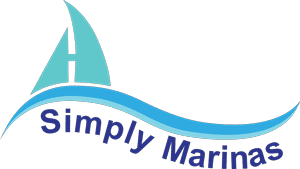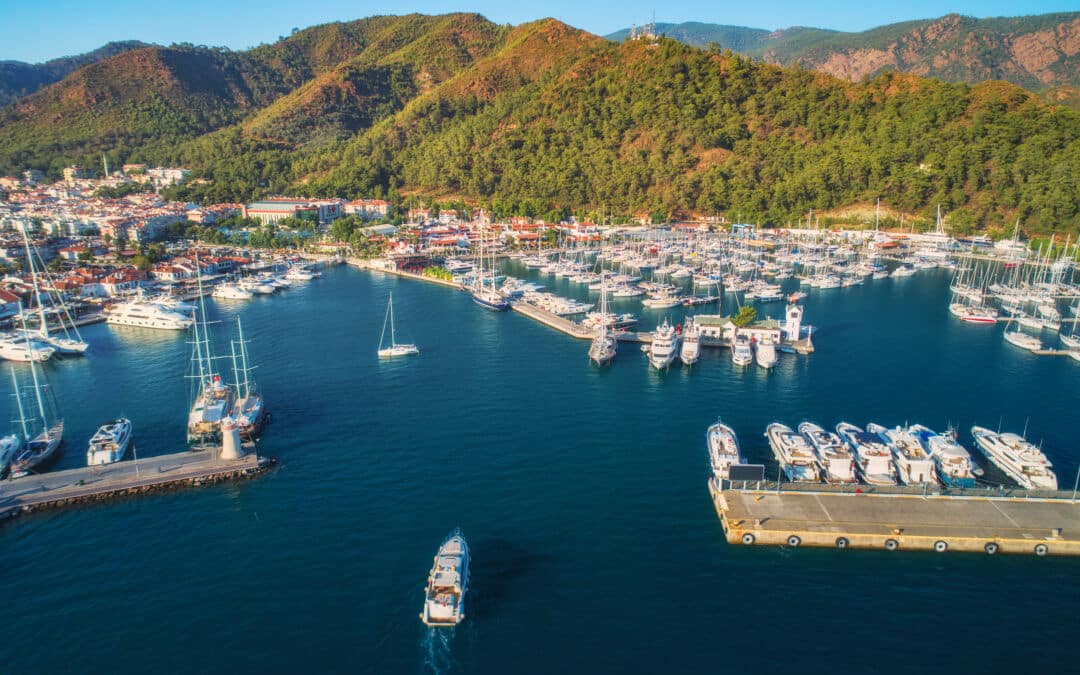Transient Boating Traffic
Outside factors aside, different regions also play host to different types of boaters. There are marinas that sit along what’s basically the main boating thoroughfare and subsequently, they tend to get a lot of transients. The Intracoastal Waterway that runs from VA to FL is perhaps the most traveled, taking boaters from north to south and back again when the seasons change. If you look to buy a marina along the ICWW, count on docks and amenities dedicated to boats that stop by for a night or a few days. The Great Loop is another popular route for those who take their boats on extended trips.
But these waterways are not the only places that call to transients. Most marinas can have boats that stop in, but there are some regions where that’s just more popular. Islands tend to attract a large transient clientele—Martha’s Vineyard, Bald Head Island, Block Island to name a few. The Chesapeake Bay captures transients who can easily jump from quaint waterfront town to town making for a choice weekend escape or summer tour.
On the west coast, sketchy coastal weather systems, keep many would-be transient boaters at bay, but there are some pockets in Washington and California that can still attract a crowd like Anacortes and Monterey. A good idea is to ensure you look at a history of income from transients before you purchase a marina in a popular location. The higher dockage rates transients bring are only worthwhile if the boats show up.
Resort or Mom and Pop
Maybe life at a small marina on an inland lake, serving smaller boats, and perhaps a clientele that doesn’t need to be catered to is your ideal. Smaller boats and do-it-yourselfer boaters could mean less income potential, and the opportunity to add transient traffic to the income stream is about eliminated. But there may be more opportunities to expand upland amenities simply because there is more available land. This may be the spot to add an RV park, restaurant, or event hall. Boat rentals may be lucrative in an area that is ripe for fishing, but low in boat ownership.
On the reverse are the many coastal urban marinas, that have boaters with likely more income, who are looking for and willing to pay for more service. If you want to embrace the marina as a resort concept, finding a facility close to an urban area will make sense. Marinas tend to be larger, because they have a greater boating population to support them, and they offer amenities from restaurants to boat clubs, concierge service to dog parks, and full-service to hotels on-site.
Boat Sizes
Just as regions dictate the type of boaters, they can also shape what size boats you can expect to serve. It may seem obvious that coastal marinas will see larger boats because these vessels head out into the ocean for longer journeys. But that’s just partly true. The Great Lakes are host to their share of 100-footers, but they are not likely to see an influx of mega yachts and trimarans. It is safe to say the smaller the water body, the smaller the boats will be, but the region still factors in. The southeast is more likely to attract mega yachts as they can easily launch from that region to the islands. And if you have a large vessel, why not put it in an area with year-round boating?
The northeast and west also can attract mega yachts, but without the close proximity of foreign locales that the southeast has, there just isn’t as much of this activity.
The Weather
Starting with the most obvious, weather differs by region. It is colder in the north than the south, drier in the Midwest than the Pacific Northwest, and stormier along the Gulf than in the West. The simple way to choose in which area you’d like to buy a marina is to decide what weather you like best. However, outside of personal preference are a host of considerations in determining which climate best suits your plans.
Marinas in south stay open and busy year-round assuring steady income but you’ll spend more on infrastructure through the extended wear and tear and storm-resistance requirements. Marinas from about Virginia to Florida and the Gulf States have active boating all year, but all these areas face threats from tropical storms, hurricanes, and flooding. Piles may need to be excessively high to keep docks from floating off them during extreme tides. Upland structures should be constructed to withstand hurricane-force winds. Flood insurance costs need to be factored into the financial picture. In general, it costs more to construct and operate marinas in Florida, but they also never shut down.
If your preference is to briefly escape the harsh winter months and the day-to-day grind of running a marina each year, buying a marina in the northern regions, whether Northeast, Midwest, or Northwest, can be enticing. Shutting down though means there will be no steady income. It also means infrastructure and boats will need to be winterized and you’ll have busy haul out and drop in seasons. There will need to be space for storing boats over the winter either on the hard or in buildings. Staffing will be different with fewer people needed during the winter. If the northern region is ripe for freezing temperatures, also factor in costs to install infrastructure to reduce the risk of damage from ice. Be prepared to budget accordingly, both in time and financially.
The weather of the Midwest may seem easy to deal with in comparison to the border states, but tornados, windstorms, and droughts cannot be overlooked. Changing lake levels are real. Drought plagues some areas, while excessive ice and snow melt leave other areas flooded. Imagine trying to construct gangways not knowing what the average lake level will be. But, overall, the Midwest tends not throw out as many weather surprises, allowing for a steadier more assured operation.
The team at Simply Marinas has worked with hundreds of buyers across the country, and our experience leads us to recommend not using weather alone to dictate where you want to buy a marina. As shown, there are many factors in each region that can impact operations, construction, management, as well as your own personal happiness. Consider what type of boaters and boats you want to support, how you want to operate a facility, and how much risk you are willing to take from Mother Nature, then look for the region that will best support your plans. Simply Marinas is happy to help you find your perfect match. Contact us to learn more.

